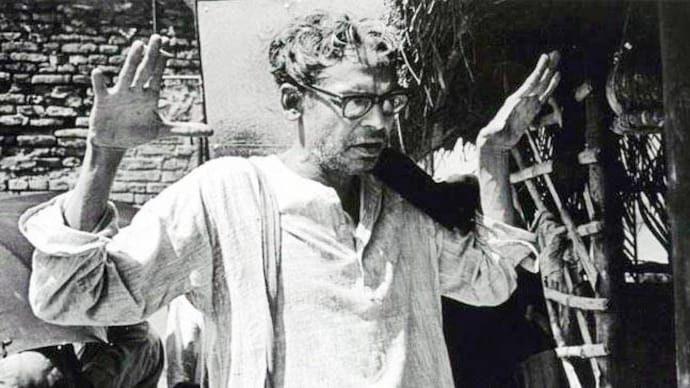Remembering Ritwik Ghatak: 5 best works of this legendary filmmaker
On the 40th death anniversary of filmmaker Ritwik Ghatak, let's take a look at few of the remarkable movies he worked on as a director and writer.

Some remember him as a genius underrated in his lifetime; some as the maverick filmmaker who had his own way of story-telling.
Ritwik Kumar Ghatak was one of the forerunners of Parallel Cinema, who in his rather short 50-year lifespan brought to the Indian film industry a range of movies driven by realism and his sociopolitical outlook.
Also read: Ritwik Ghatak: Posthumous acclaim
A former principal of the Film and Television Institute of India (FTII) and recipient of a number of awards, including the Padma Shri in 1970, Ghatak's work also earned him widespread international recognition.
Although primarily known as a director, with eight full-length feature films, a few short films and documentaries to his credit, Ghatak has also been recognised for writing movies, plays, essays on film making, etc.
Also read: The other Ritwik
Ghatak's views and commentaries on films, having written more than 50 articles and essays on the subject, are counted as a part of scholarly studies and researches.
On his 40th death anniversary, we bring to you a list of his works as a director and writer:
1. Ajantrik (1958)
Internationally known as 'The Unmechanical', 'The Mechanical Man' or 'The Pathetic Fallacy', this Bengali comedy-drama film is often counted as India's first sci-fi.
Ajantrik, Ghatak's first commercial release as a director, tells the story of a poor taxi driver who owned a 'living' car, making it one of the earliest Indian films to revolve around an inanimate object.
The film had received a special entry for screening at the Venice Film Festival in 1959.

2. Madhumati (1958)
Ghatak had worked on this Hindi drama film as a writer along with Rajinder Singh Bedi.
Directed by Bimal Roy, Madhumati was one of the earliest films to deal with reincarnation, which went on to inspire a number of movies to come, including Karz and Om Shanti Om.
Madhumati also earned Ghatak his first award nomination for the Filmfare Best Story Award.

3. Meghe Dhaka Tara (1960)
Ghatak worked on Meghe Dhaka Tara, dubbed as The Cloud-Capped Star, as both the writer and director, basing it on a social novel by Bengali author Shaktipada Rajguru.
The movie, a part of a trilogy, dealt with the aftermath of the Partition of Bengal and the tragedy imposed on the refugees.
Meghe Dhaka Tara has been listed in the book 1001 Movies You Must See Before You Die, praising "the grace of Ghatak's mise en scene, his expressionist sound design, and the enormous sense of loss".
4. Komal Gandhar (1961)
Also known as A Soft Note On A Sharp Scale, Komal Gandhar is the second movie in the Ghatak's trilogy after Meghe Dhaka Tara.
Along with revolving around the theme of the Partition, the movie also tells the tale of a star-crossed couple and the rift that divided the Indian People's Theatre Association (IPTA).
Komal Gandhar, the title being a translation of the musical notation E-flat, was a commercial failure but is still counted as one of Ghatak's best works.

5. Subarnarekha (1965)
The last of Ghatak's Partition Trilogy, Subarnarekha (Golden Lining) revolves around the lives of three refugees in West Bengal: a Hindu man, his little sister, and a low-caste boy that he takes in.
Named after the river Subarnarekha, the movie had actually been produced in 1962 but was not released until 1965.
Subarnarekha went on to be ranked as number 11 in a critics' poll of all-time greatest films conducted by Asian film magazine Cinemaya in 1998.
